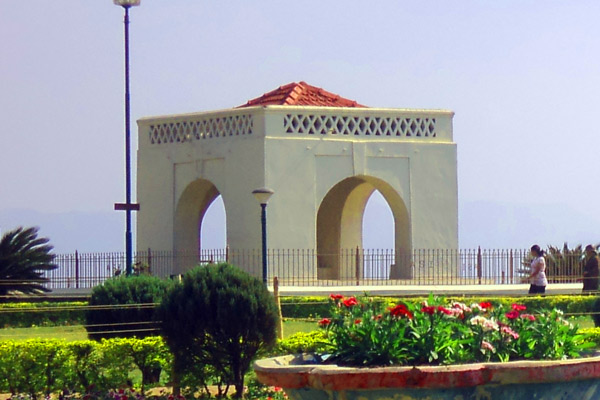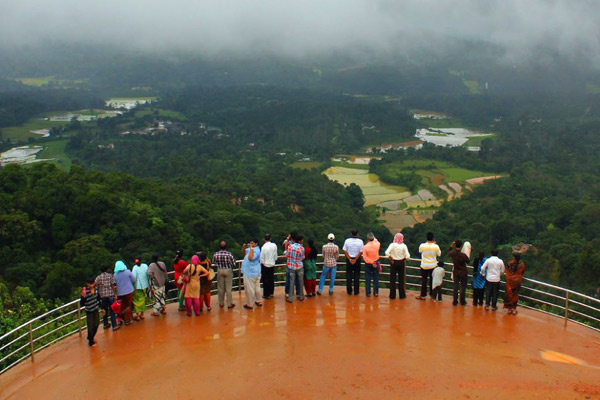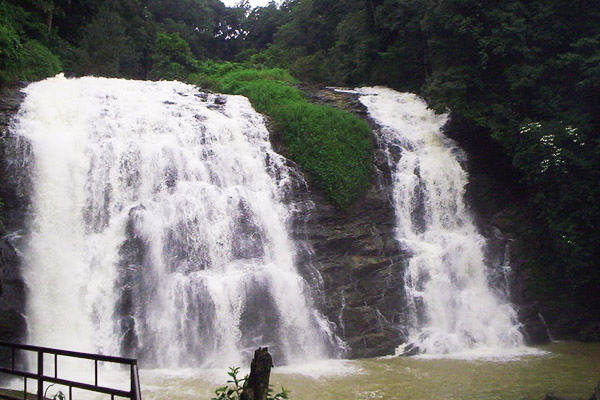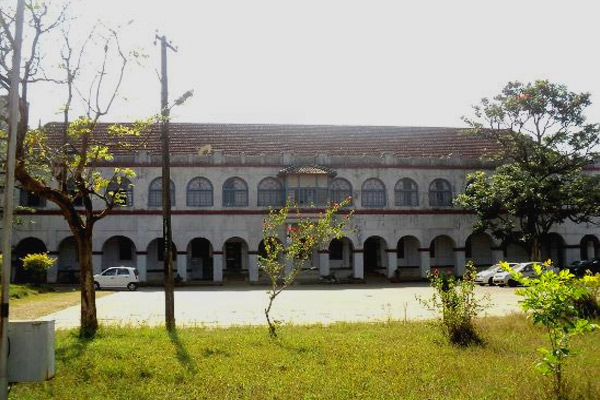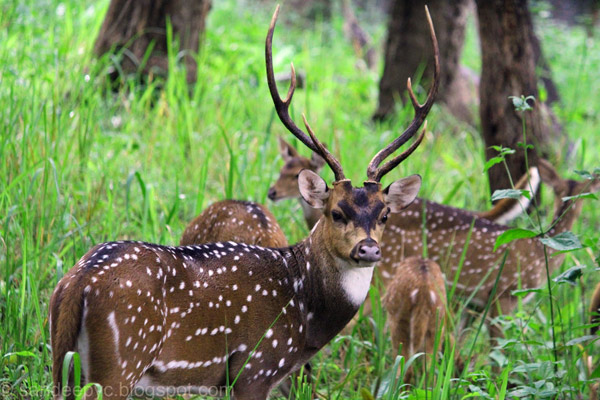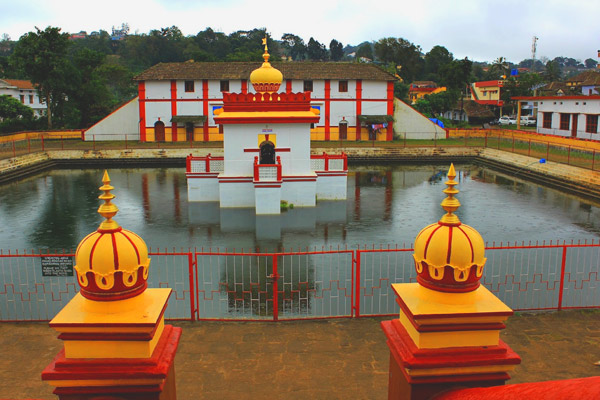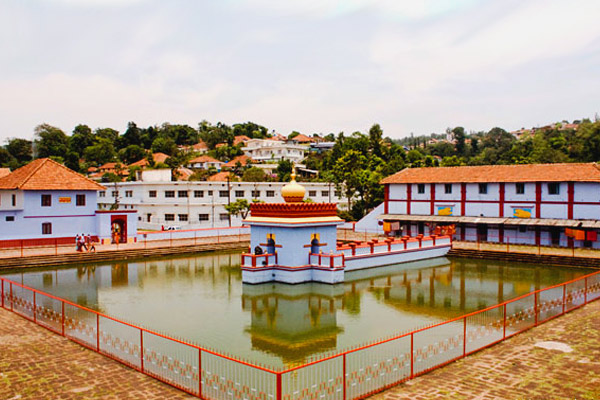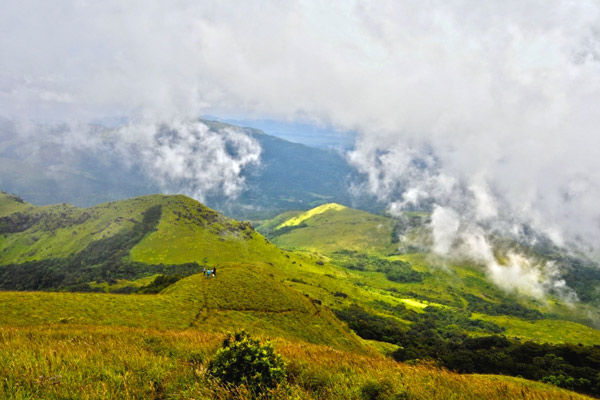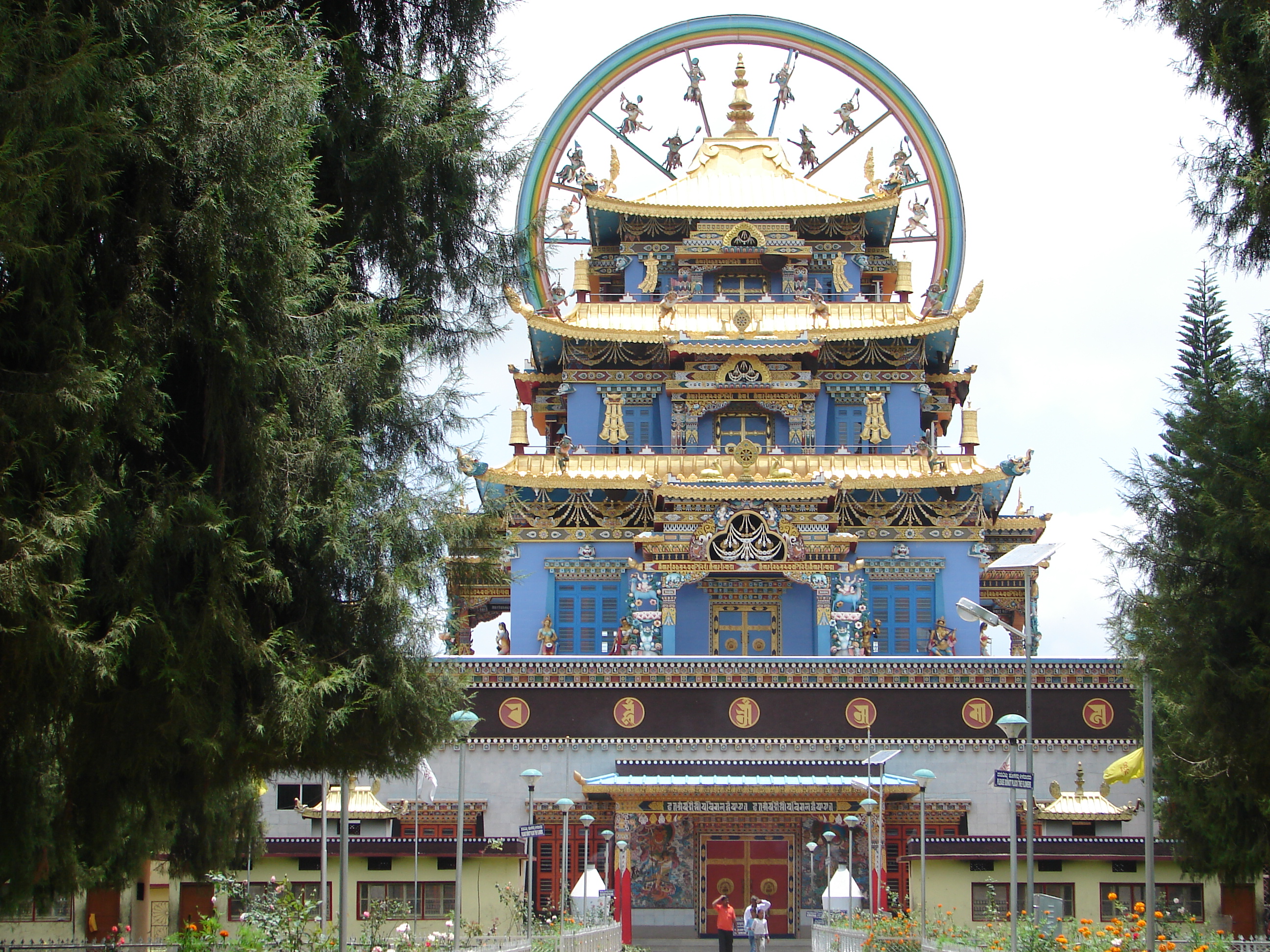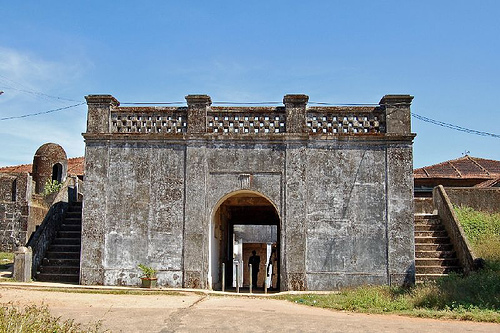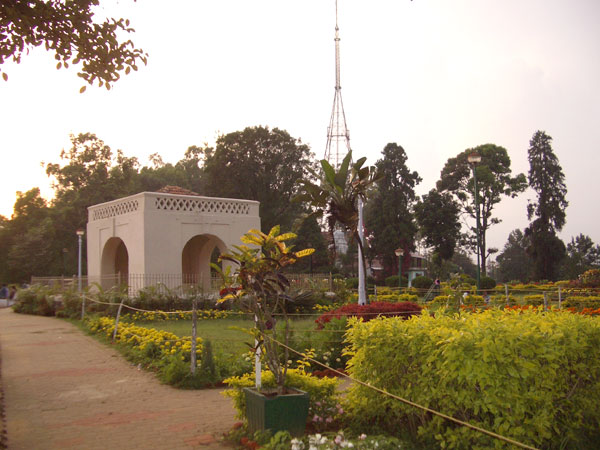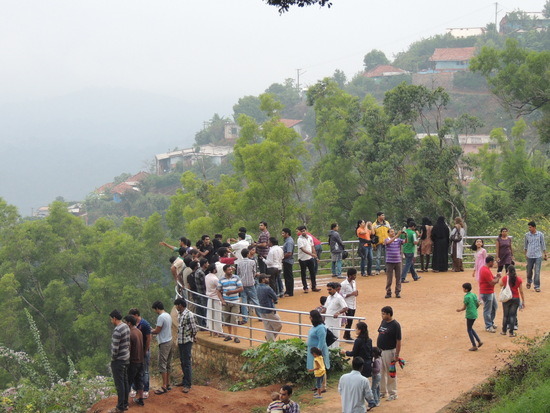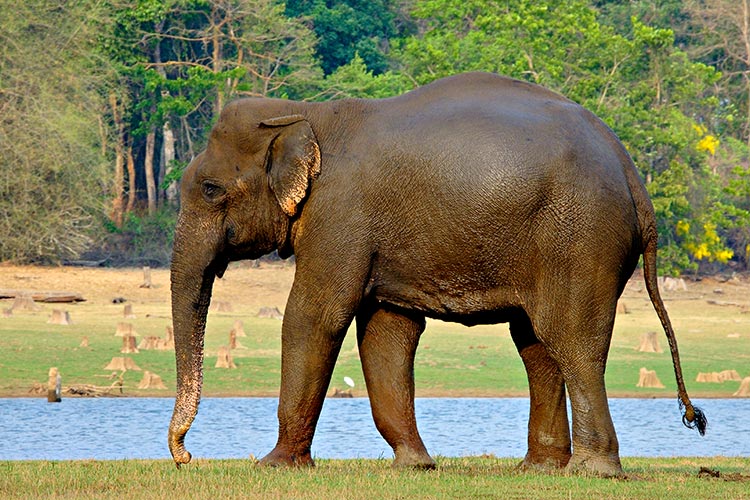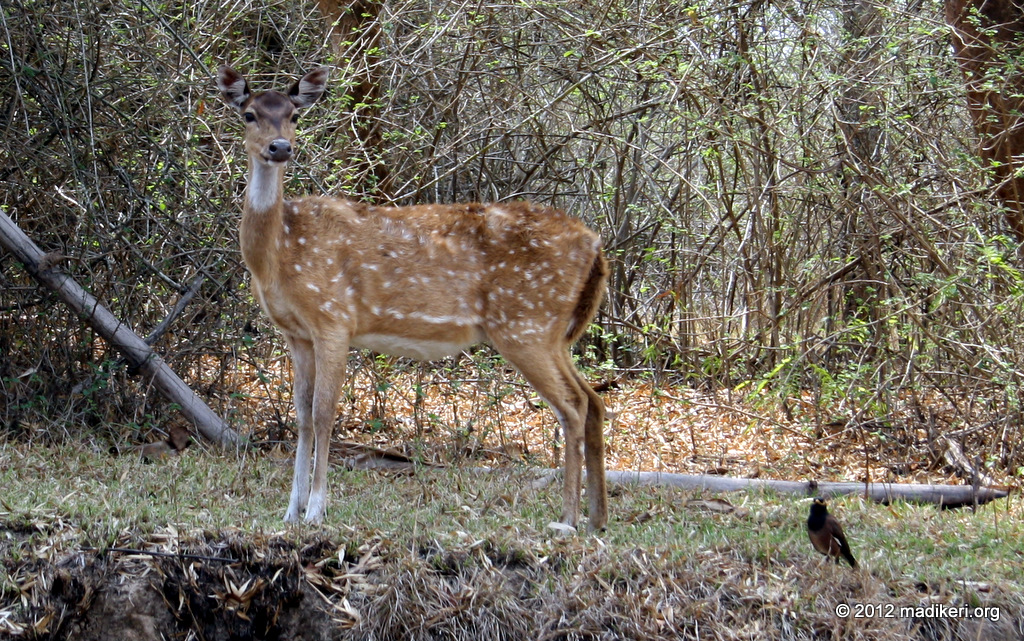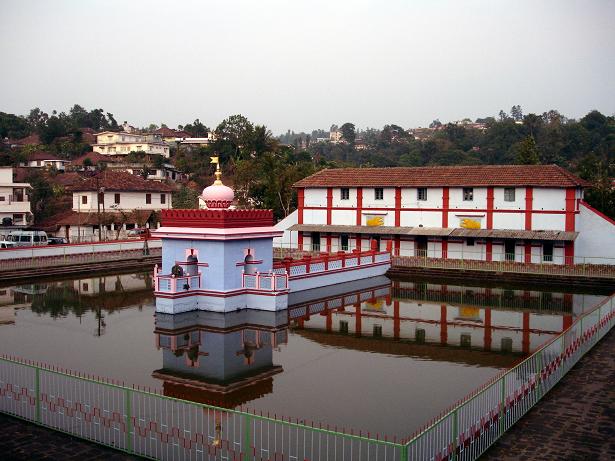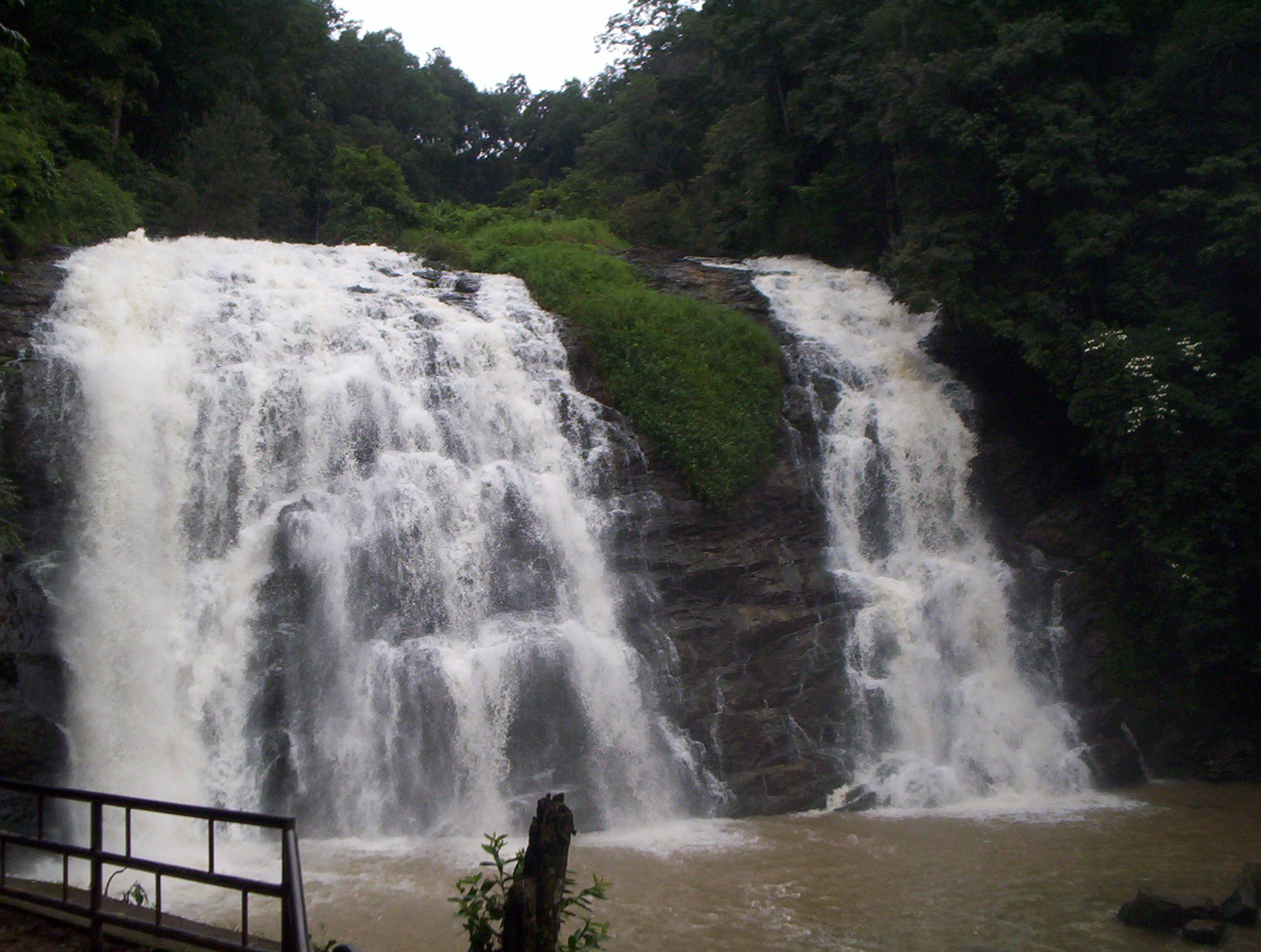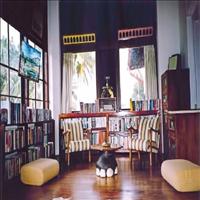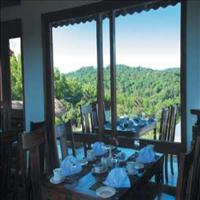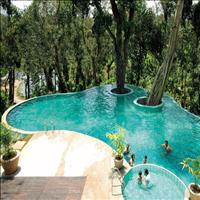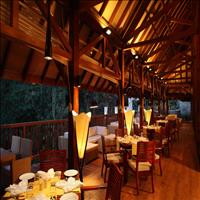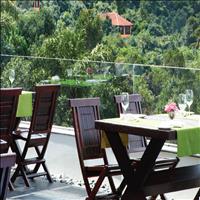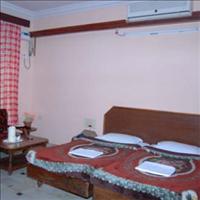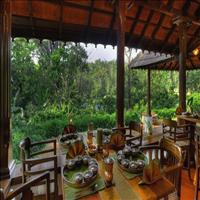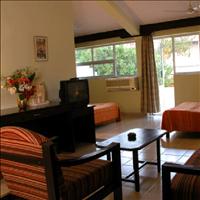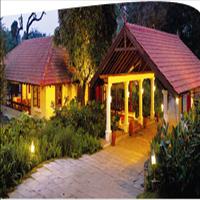Coorg
General Information
Other Name: Madekeri, Mercara, District: Kodagu, State: Karnataka, India
Area: 255854000 Sq. Km.
Languages Spoken: Kannada, Malayalam, English
Long Distance Code: +91-8272
Importance: Coffee plantations and the teak wood forests.
Best Time to Visit: November to April
Description
Easily one of the most attractive regions in India, Coorg or Kodagu is an enchanting expanse of natural tourist spot that nestles amid the hills and valleys of the picturesque Western Ghats. The Kodagu people have always stood apart handsome, brave and hospitable. A distinguished martial tradition has given the Indian Army several Generals and Brigadiers. Known by their special variants of wearing the saree, the Kodagu women are graceful and beautiful. Kodagu district has several tourist spots of historic, epic and natural importance. <br />Kodagu has three taluks- Madikeri, Virajpet and Somwarpet. Steep hills, valleys and gorges with countless streams that gurgle through them, beckon intrepid trekkers and rock climbers.<br />Location
Coorg is situated on the Western Ghats of Karnataka in South India. For the adventurous at heart, it is an absolute treat. There are trekking, golfing and angling (Mahaseer too!) options available. Religious trips abound on Hindu and Buddhist circuits. Family getaways can be easily arranged. You can also relax your body and mind with special Ayurvedic massages. Coorg is also as trendy and happening as its close neighbour Bangalore.
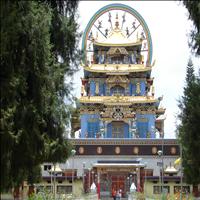 Cool, beautiful-with lovely walks, wonderful views of the sea, and old buildings such as a historic fort and a palace- the small hill station of Madikeri, 125 km west of Mysore at an elevation of 1,525 metres, is set in the heart of the exotic coffee-growing country. Also known as Mercara, this little hill township is considered as the capital of the Coorg region. The town, which is perched on a series of ridges that command breathtaking views, was a miniscule state in its own right till a fe w decades ago. Around Madikeri roll the coffee estates. Karnataka leads in coffee production and Coorg accounts for almost half of the total coffee production in the state. The estates attract a large variety of birds, wild elephants and an occasional boar. The elephants search around for tender coconut shoots, jackfruits and papayas and it is not uncommon to come across them while motoring around in Coorg.
Cool, beautiful-with lovely walks, wonderful views of the sea, and old buildings such as a historic fort and a palace- the small hill station of Madikeri, 125 km west of Mysore at an elevation of 1,525 metres, is set in the heart of the exotic coffee-growing country. Also known as Mercara, this little hill township is considered as the capital of the Coorg region. The town, which is perched on a series of ridges that command breathtaking views, was a miniscule state in its own right till a fe w decades ago. Around Madikeri roll the coffee estates. Karnataka leads in coffee production and Coorg accounts for almost half of the total coffee production in the state. The estates attract a large variety of birds, wild elephants and an occasional boar. The elephants search around for tender coconut shoots, jackfruits and papayas and it is not uncommon to come across them while motoring around in Coorg.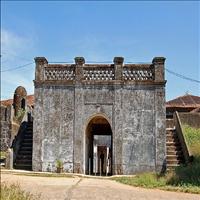 The fort was initially constructed of mud, only to be replaced later by a stronger one in stone by Tipu Sultan, who ruled for a brief period over this region in the 18th century. Tipu's fort is an essential feature of the town even today.\r\nInside the fort wall stands the palace of the Lingayat rulers. It is a simple double-storey structure, quite unlike the grand palaces one sees elsewhere in India. Two elephants, built of cement and mortar, stand in the compound. The elephants have an interesting story behind them. The king use to be woken up every morning by two of his favourite elephants trumpeting under his window. One day he sent word to the mahout that he wanted to sleep late. The order never reached the man and he brought the elephants at the usual time and woke up the king. The king was furious. He had the elephants and the mahout killed. Later he regretted his action and got images of the elephants constructed. They are not much to look at, but then one shouldn't be looking for sculptural excellence in Coorg.
The fort was initially constructed of mud, only to be replaced later by a stronger one in stone by Tipu Sultan, who ruled for a brief period over this region in the 18th century. Tipu's fort is an essential feature of the town even today.\r\nInside the fort wall stands the palace of the Lingayat rulers. It is a simple double-storey structure, quite unlike the grand palaces one sees elsewhere in India. Two elephants, built of cement and mortar, stand in the compound. The elephants have an interesting story behind them. The king use to be woken up every morning by two of his favourite elephants trumpeting under his window. One day he sent word to the mahout that he wanted to sleep late. The order never reached the man and he brought the elephants at the usual time and woke up the king. The king was furious. He had the elephants and the mahout killed. Later he regretted his action and got images of the elephants constructed. They are not much to look at, but then one shouldn't be looking for sculptural excellence in Coorg.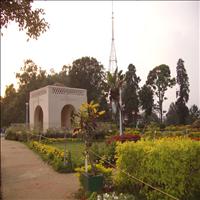 If you have come away to enjoy the natural beauty in Coorg, come to Raja's Seat, a favourite spot of the kings from where one can see the sweep of the mist-covered blue hills and valleys with green fields. The kings used to sit here every evening enjoying the sunset and beauty of Coorg. Today, the area around Raja's Seat has been developed into a public garden.
If you have come away to enjoy the natural beauty in Coorg, come to Raja's Seat, a favourite spot of the kings from where one can see the sweep of the mist-covered blue hills and valleys with green fields. The kings used to sit here every evening enjoying the sunset and beauty of Coorg. Today, the area around Raja's Seat has been developed into a public garden.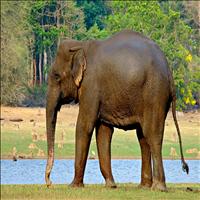 Nagarahole is derived from the combination of two Kannada words, nagar meaning snake and hole, meaning streams and true to its name a number of streams snake through its rich tropical forests. \r\nNagarahole is situated in the picturesque districts of Kodagu and Mysore in southern Karnataka. The Nagarahole National Park was first set up in 1955. In 1975 its area was increased to include a greater expanse of forest reserve.\r\nOnce an exclusive hunting preserve of the erstwhile rulers of Mysore, the terrain of this Park is gently undulating with lush green vegetation, swamps and numerous water resources, rendering it an ideal habitat for a wide variety of wildlife.\r\nThe forest is home to animals like the four-horned antelope, sloth bear, jungle cat, civet, spotted deer, elephant, wild dog, flying fox, tiger, panther, gaur (Indian bison), sambhar, wild boar, black-naped hare, bonnet macaque, and pangolin.\r\nCobras, crocodiles, kraits, pythons, vipers, and several species of lizards are also found here. Among the 250 bird species found here, the prominent ones are the common babbler, bee-eater, bulbul, dove, crested serpent, hornbill, Malabar pied, alexandrine, peacock, woodpecker, warbler, great Indian reed, eagle, crested hawk, golden-back parakeet, and the southern tree pie.\r\nNagarhole is worth visiting at the height of the dry season, when wild animals can be spotted in large numbers near sources of water.
Nagarahole is derived from the combination of two Kannada words, nagar meaning snake and hole, meaning streams and true to its name a number of streams snake through its rich tropical forests. \r\nNagarahole is situated in the picturesque districts of Kodagu and Mysore in southern Karnataka. The Nagarahole National Park was first set up in 1955. In 1975 its area was increased to include a greater expanse of forest reserve.\r\nOnce an exclusive hunting preserve of the erstwhile rulers of Mysore, the terrain of this Park is gently undulating with lush green vegetation, swamps and numerous water resources, rendering it an ideal habitat for a wide variety of wildlife.\r\nThe forest is home to animals like the four-horned antelope, sloth bear, jungle cat, civet, spotted deer, elephant, wild dog, flying fox, tiger, panther, gaur (Indian bison), sambhar, wild boar, black-naped hare, bonnet macaque, and pangolin.\r\nCobras, crocodiles, kraits, pythons, vipers, and several species of lizards are also found here. Among the 250 bird species found here, the prominent ones are the common babbler, bee-eater, bulbul, dove, crested serpent, hornbill, Malabar pied, alexandrine, peacock, woodpecker, warbler, great Indian reed, eagle, crested hawk, golden-back parakeet, and the southern tree pie.\r\nNagarhole is worth visiting at the height of the dry season, when wild animals can be spotted in large numbers near sources of water.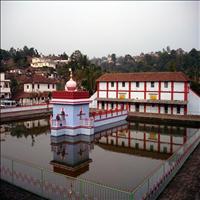 The Omkareshwara Temple, dedicated to both Shiva and Vishnu, is almost 200 years old and is a surprising blend of Islamic and Gothic styles.
The Omkareshwara Temple, dedicated to both Shiva and Vishnu, is almost 200 years old and is a surprising blend of Islamic and Gothic styles.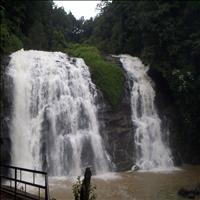 This beautiful coffee country also has many places nearby to be visted for an excursion.
This beautiful coffee country also has many places nearby to be visted for an excursion. \r\nThe picturesque Abbey Falls, which is 8 kms from Madikeri, is a good place for picnics. However, no regular transport is available to this place and private arrangements need to be made for a trip to the falls.
\r\nIruppu is a well known pilgrimage centre and is situated around 90 kms from Madikeri. Associated with Ram, hero of the epic Ramayana, this place has a beautiful temple dedicated to Lord Shiva on the banks of the River Ramathiratha. On Mahashivratri day, thousands of pilgrims take a dip in the river.
\r\nNearly 30 kms from Madikeri a beautiful forest resort specially built by the State Forest Department, Nisargadhama is a perfect way to relax in nature. There are a few islets in the river Cauvery where the Nisargadhama has developed. A cluster of wooden huts it blends superbly with the sandalwood forest around and offers all the best services in the hospitality industry.
\r\nAbout 45 kms from Madikeri is the Dubare forest. The reserve forest is famous for its amazing variety of avian fauna. An elephant training camp and angling possibilities on the Cauvery River are other attractions here. \r\n\r\n
South India Cultural Tour / PI-0292 (15 Days / 14 Nights)
Bengaluru-Srirangapatnam-Mysore-Coorg-Mysore-Hassan-Shravanbelagola-Hassan-Hospet-Pattadakal-Aihole-Badami-Belgaum-Goa-Mumbai
Detailed Itinerary
Day 1 : Bengaluru
Day 2 : Bengaluru
Day 3 : Bengaluru - Srirangapatnam - Mysore
Day 4 : Mysore-Coorg
Day 5 : Mysore - Hassan
Day 6 : Hassan - Shravanbelagola - Hassan
Day 7 : Hassan - Hospet
Day 8 : Hospet
Day 9 : Hospet - Pattadakal - Aihole - Badami
Day 10 : Badami
Day 11 : Badami-Belgaum-Goa
Day 12 : Goa
Day 13 : Goa
Day 14 : Goa
Day 15 : Goa - Mumbai
Bengaluru-Srirangapatnam-Mysore-Coorg-Mysore-Hassan-Shravanbelagola-Hassan-Hospet-Pattadakal-Aihole-Badami-Belgaum-Goa-Mumbai
Detailed Itinerary
Day 1 : Bengaluru
Day 2 : Bengaluru
Day 3 : Bengaluru - Srirangapatnam - Mysore
Day 4 : Mysore-Coorg
Day 5 : Mysore - Hassan
Day 6 : Hassan - Shravanbelagola - Hassan
Day 7 : Hassan - Hospet
Day 8 : Hospet
Day 9 : Hospet - Pattadakal - Aihole - Badami
Day 10 : Badami
Day 11 : Badami-Belgaum-Goa
Day 12 : Goa
Day 13 : Goa
Day 14 : Goa
Day 15 : Goa - Mumbai
Gateway to India and South India / PI-0388 (16 Days / 15 Nights)
Mumbai-Goa-Belgaum-Badami-Aihole-Pattadakal-Hospet-Hassan-Shravanbelagola-Hassan-Coorg-Mysore-Srirangapatnam-Bengaluru-Mumbai
Take a trip into the past, you'\ll discover a land of many surprises, Musical pillars, Stone dancers, Elephant stables, Monumental temples, Sandy beaches, you will enjoy them all while you enter through Gateway of India.
Detailed Itinerary
Day 1 : Mumbai
Day 2 : Mumbai
Day 3 : Mumbai - Goa
Day 4 : Goa
Day 5 : Goa
Day 6 : Goa - Belgaum - Badami
Day 7 : Badami
Day 8 : Badami - Aihole - Pattadakal - Hospet
Day 9 : Hospet
Day 10 : Hospet - Hassan
Day 11 : Hassan - Shravanbelagola - Hassan
Day 12 : Hassan-Coorg
Day 13 : Coorg-Mysore
Day 14 : Mysore
Day 15 : Mysore - Srirangapatnam - Bengaluru
Day 16 : Bengaluru - Mumbai
Mumbai-Goa-Belgaum-Badami-Aihole-Pattadakal-Hospet-Hassan-Shravanbelagola-Hassan-Coorg-Mysore-Srirangapatnam-Bengaluru-Mumbai
Take a trip into the past, you'\ll discover a land of many surprises, Musical pillars, Stone dancers, Elephant stables, Monumental temples, Sandy beaches, you will enjoy them all while you enter through Gateway of India.
Detailed Itinerary
Day 1 : Mumbai
Day 2 : Mumbai
Day 3 : Mumbai - Goa
Day 4 : Goa
Day 5 : Goa
Day 6 : Goa - Belgaum - Badami
Day 7 : Badami
Day 8 : Badami - Aihole - Pattadakal - Hospet
Day 9 : Hospet
Day 10 : Hospet - Hassan
Day 11 : Hassan - Shravanbelagola - Hassan
Day 12 : Hassan-Coorg
Day 13 : Coorg-Mysore
Day 14 : Mysore
Day 15 : Mysore - Srirangapatnam - Bengaluru
Day 16 : Bengaluru - Mumbai
Discover Karnataka / PI-0331 (15 Days / 14 Nights)
Hyderabad-Bidar-Gulbarga-Bijapur-Badami-Hampi-Chittorgarh-Chittor-Chikmaglur-Coorg-Nagarhole-Mysore-Bengaluru
Karnataka, a region that has it all except the snow. This two-week tour explores a few of the most fascinating destinations in Karnataka. We start at Hyderabad and drive down to Bidar, Gulbarga and Bijapur, all having been ruled under the Muslim reign. The monuments at these places speak of volumes of this splendid symmetrical architecture and fine inlay work. We then move to the next stage of Hindu architecture. Both Pattadakal and Hampi declared World Heritage Sites, portray the rich heritage of the place. From here we travel to the greener pastures of Chikmagalur, Coorg and Nagarhole National Park. We end this journey through Mysore, the second biggest city of the state and completing at Bangalore, the IT hub of the new India.
Detailed Itinerary
Day 1 : Hyderabad
Day 2 : Hyderabad
Day 3 : Hyderabad-Bidar-Gulbarga
Day 4 : Gulbarga - Bijapur
Day 5 : Bijapur - Badami
Day 6 : Badami - Hampi
Day 7 : Hampi
Day 8 : Hampi - Chittorgarh
Day 9 : Chittor-Chikmaglur
Day 10 : Chikmaglur
Day 11 : Coorg
Day 12 : Coorg - Nagarhole
Day 13 : Nagarhole - Mysore
Day 14 : Mysore - Bengaluru
Day 15 : Bengaluru
Hyderabad-Bidar-Gulbarga-Bijapur-Badami-Hampi-Chittorgarh-Chittor-Chikmaglur-Coorg-Nagarhole-Mysore-Bengaluru
Karnataka, a region that has it all except the snow. This two-week tour explores a few of the most fascinating destinations in Karnataka. We start at Hyderabad and drive down to Bidar, Gulbarga and Bijapur, all having been ruled under the Muslim reign. The monuments at these places speak of volumes of this splendid symmetrical architecture and fine inlay work. We then move to the next stage of Hindu architecture. Both Pattadakal and Hampi declared World Heritage Sites, portray the rich heritage of the place. From here we travel to the greener pastures of Chikmagalur, Coorg and Nagarhole National Park. We end this journey through Mysore, the second biggest city of the state and completing at Bangalore, the IT hub of the new India.
Detailed Itinerary
Day 1 : Hyderabad
Day 2 : Hyderabad
Day 3 : Hyderabad-Bidar-Gulbarga
Day 4 : Gulbarga - Bijapur
Day 5 : Bijapur - Badami
Day 6 : Badami - Hampi
Day 7 : Hampi
Day 8 : Hampi - Chittorgarh
Day 9 : Chittor-Chikmaglur
Day 10 : Chikmaglur
Day 11 : Coorg
Day 12 : Coorg - Nagarhole
Day 13 : Nagarhole - Mysore
Day 14 : Mysore - Bengaluru
Day 15 : Bengaluru
Blissful Journey to Karnataka / PC-619 (7 Days / 6 Nights)
Bengaluru-Mysore-Coorg-Kabini-Bengaluru
Enjoy the beautiful scenic valleys of Coorg and Kabini with this wonderful tour designed to make you feel spoiled. Offering ample opportunity for you and your partner to indulge in some long peaceful nature walks, Coorg hill station brings you up close and personal with the nature itself. The beautiful locales of this place even offer exotic bird watching and exciting nature walk expeditions to all the visiting nature lovers. Far from the city hustle and bustle, the place leaves your senses recharged ready to face the routine again. Another wonderful destination covered during the course of this trip is Kabini. This place with its tribal village visit and Coracle ride will leave you full of unforgettable memories. So, come, make some enduring memories with this short and sweet trip that will make you feel replenished and refreshed.
Detailed Itinerary
Day 1 : Bengaluru
Day 2 : Bengaluru-Mysore
Day 3 : Mysore-Coorg
Day 4 : Coorg
Day 5 : Coorg-Kabini
Day 6 : Kabini
Day 7 : Kabini-Bengaluru
Bengaluru-Mysore-Coorg-Kabini-Bengaluru
Enjoy the beautiful scenic valleys of Coorg and Kabini with this wonderful tour designed to make you feel spoiled. Offering ample opportunity for you and your partner to indulge in some long peaceful nature walks, Coorg hill station brings you up close and personal with the nature itself. The beautiful locales of this place even offer exotic bird watching and exciting nature walk expeditions to all the visiting nature lovers. Far from the city hustle and bustle, the place leaves your senses recharged ready to face the routine again. Another wonderful destination covered during the course of this trip is Kabini. This place with its tribal village visit and Coracle ride will leave you full of unforgettable memories. So, come, make some enduring memories with this short and sweet trip that will make you feel replenished and refreshed.
Detailed Itinerary
Day 1 : Bengaluru
Day 2 : Bengaluru-Mysore
Day 3 : Mysore-Coorg
Day 4 : Coorg
Day 5 : Coorg-Kabini
Day 6 : Kabini
Day 7 : Kabini-Bengaluru
Horse Safari in India / PI-0128 (10 Days / 9 Nights)
Bengaluru-Mysore-Srirangapattana-Coorg-Madikeri-Hassan-Belur & Halebid-Hassan-Shravanabelagola-Bengaluru
Sturdy, well - maintained horses are nothing new to the visitors but a few could have taken such long trips on horse - backs. Conditions are similar to camel safaris with grooms accompanying. We do undertake such tours in Karnataka, Uttar Pradesh and Rajasthan. There are bonfires and entertainment provided by folk entertainers on the way. A tiring but exhilarating experience.
Detailed Itinerary
Day 1 : Bengaluru
Day 2 : Bengaluru - Mysore
Day 3 : Mysore-Srirangapattana
Day 4 : Srirangapattana
Day 5 : Coorg
Day 6 : Coorg
Day 7 : Madikeri - Hassan
Day 8 : Hassan - Belur & Halebid - Hassan
Day 9 : Hassan - Shravanabelagola - Bengaluru
Day 10 : Bengaluru
Bengaluru-Mysore-Srirangapattana-Coorg-Madikeri-Hassan-Belur & Halebid-Hassan-Shravanabelagola-Bengaluru
Sturdy, well - maintained horses are nothing new to the visitors but a few could have taken such long trips on horse - backs. Conditions are similar to camel safaris with grooms accompanying. We do undertake such tours in Karnataka, Uttar Pradesh and Rajasthan. There are bonfires and entertainment provided by folk entertainers on the way. A tiring but exhilarating experience.
Detailed Itinerary
Day 1 : Bengaluru
Day 2 : Bengaluru - Mysore
Day 3 : Mysore-Srirangapattana
Day 4 : Srirangapattana
Day 5 : Coorg
Day 6 : Coorg
Day 7 : Madikeri - Hassan
Day 8 : Hassan - Belur & Halebid - Hassan
Day 9 : Hassan - Shravanabelagola - Bengaluru
Day 10 : Bengaluru
Coorg, India Tours

